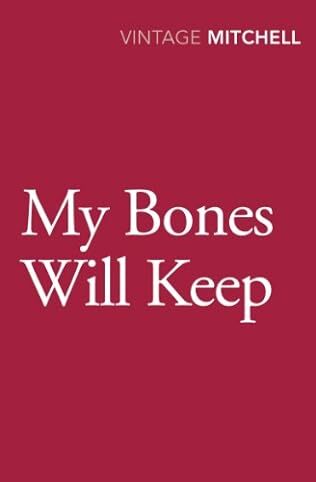My Bones Will Keep

A review of My Bones Will Keep by Gladys Mitchell – 240326
Opening a Gladys Mitchell book for the first time, I take a deep breath just like I would if I was going to plunge into the loch that surrounds Tannasgan on which stands An Tigh Mór. It is going to be a shock, but will be exhilarating and might even be pleasurable. My Bones will Keep, the thirty-fifth in her Mrs Bradley series, originally published in 1962, is no exception. Her harshest critics will argue that she does her best to bewilder and confound her reader, immersing them in a world that is weird, eccentric and not a little made but one with more than a little perseverance sort of makes sense.
It is tempting to say that all the reader needs to do is read the final chapter in which Detective Inspector Gavin, who has been working, unbeknownst to Mrs Bradley, now Dame Beatrice, and her secretary and Gavin’s wife, Laura, on one aspect of the case, pulls all the pieces together of a puzzle which involves “a loch, an island, treasure, two corpses, and a couple of madmen” to bring some sense and order to the case.
One of the highlights of the book is Mitchell’s description of the Scottish scenery, whether it be Edinburgh itself or the remote Highland countryside in which much of the book is set. Rather like E C R Lorac she exhibits a wonderful sense of place and displays a love of the rugged scenery and the quaint rhythms of Highland life. But she is not averse to telling the Scots a few home truths. Gavin calls the Scots, of whom he is one, “a prejudiced, sentimental, insular, irrational people”, citing as his evidence the kilt, the sporran, the Gaelic language, the Highland weather, Robert Burns, tossing the caber, deerstalking, and Bannockburn. It sounds like the lyrics of a Scottish Ian Dury.
The book starts off conventionally enough with Dame Beatrice attending and delivering a paper at a conference in Edinburgh. Laura, her high-energy secretary, is at accompanying her and, as her husband is off on a trip allegedly catching barracuda but possibly fish of a redder hue, she is given time off to explore the Highlands, and particularly to visit the gardens of a Mrs Stewart, a friend of Dame Beatrice. Even before she has left Auld Reekie, she witnesses a murder when two men seem to push another in front of a vehicle.
Out in the wilds of the Highlands, she meets a couple, the Grants, whose car has broken down and, at the husband’s request, Laura drives Mrs Grant back to her house, where she spends the night. The following morning Laura is disconcerted to find that her car had been used and she had been overcompensated with petrol. Seeking refuge from a rainstorm she is persuaded to go to Tannasgan where she meets an eccentric red-haired red-bearded man and disturbed by the atmosphere escapes, aided by a man lurking in a boat shed. While they are making their escape the hear the swirl of pipes which suddenly stop. Later, they learn that the laird, Cu Dubh, has been murdered. Wherever she goes, Laura then seems to encounter the same people.
Back in Edinburgh, this is a mystery too intriguing for Dame Beatrice to resist. Mitchell does her best to confound her reader introducing too many characters with the same surname and several with changing identities. There is rum smuggling and gun running, suspicious comings and goings, but what the story boils down to is revenge, giving another the opportunity to run off with the treasure stashed in the cellar of the old house. Justice of a sort is done as the miscreants either skip the country, kill themselves or there is neither the will nor evidence to prosecute.
Mitchell gives her story an air of authenticity with her heavy use of Gaelic and the translation of Crioch is heady with meaning. Reading the book is like jumping on to a carousel which spins more and more out of control, leaving you dizzy without getting anywhere. It is accessible enough but it is hard to escape the conclusion that it is much ado about not very much.



